
Solids
Scope & Guideline
Unlocking the Potential of Solid Materials
Introduction
Aims and Scopes
- Solid-State Physics and Materials Science:
Research articles often delve into the physical properties of solids, including structural, electronic, mechanical, and thermodynamic characteristics. This includes studies on crystal structures, phase transitions, and the effects of various environmental conditions on material properties. - Synthesis and Characterization Techniques:
The journal emphasizes innovative synthesis methods for various solid materials, such as ceramics, glasses, and composites. It also covers advanced characterization techniques, including X-ray diffraction, neutron scattering, and electron microscopy, to elucidate the properties and behaviors of these materials. - Energy Materials and Applications:
A significant portion of the research focuses on materials for energy applications, including thermoelectric materials, electrocatalysts, and battery technologies. The journal seeks to advance understanding in the development and optimization of materials that can improve energy efficiency and sustainability. - Nanotechnology and Advanced Materials:
The journal publishes papers on nanostructured materials and composites, exploring their unique properties and potential applications in various fields, including electronics, photonics, and biomedicine. This includes studies on nanocomposites, quantum dots, and their integration into devices. - Environmental and Sustainable Materials:
Research addressing the environmental impact and sustainability of materials is also highlighted. This includes studies on biodegradable materials, recycling of solid waste, and the use of natural materials in construction and manufacturing.
Trending and Emerging
- Thermoelectric and Energy-Efficient Materials:
There is a notable increase in research focusing on thermoelectric materials, which are crucial for energy conversion applications. Studies on optimizing the thermoelectric properties of various materials are gaining traction, highlighting their importance in sustainable energy solutions. - Nanomaterials and Their Applications:
The exploration of nanomaterials, particularly their synthesis, characterization, and application in fields like electronics, photonics, and catalysis, is on the rise. The unique properties of nanoscale materials are driving innovative research directions. - Smart and Multifunctional Materials:
Emerging research on smart materials that respond to environmental stimuli (e.g., temperature, light, electric fields) is gaining popularity. These materials have potential applications in sensors, actuators, and adaptive systems. - Sustainable and Green Materials:
A growing focus on sustainable materials that reduce environmental impact is evident. Research on bio-based materials, recycling processes, and environmentally friendly synthesis methods is becoming more prevalent. - Advanced Characterization Techniques:
The use of cutting-edge characterization techniques, such as in situ imaging and spectroscopy, is becoming increasingly important. These methods provide deeper insights into the properties and behaviors of materials at the atomic and molecular levels.
Declining or Waning
- Traditional Ceramics and Glasses:
Research on conventional ceramics and glasses is becoming less frequent, possibly due to a shift towards more advanced materials and composites that offer improved performance and sustainability. - Basic Theoretical Studies:
There appears to be a decrease in purely theoretical studies without experimental validation or application. The trend is moving towards research that combines theory with practical applications or experimental results. - Macroscopic Mechanical Properties:
While mechanical properties remain important, the focus on macroscopic behaviors of materials, such as bulk mechanical testing, is waning in favor of more detailed studies at the microstructural or nanoscale levels. - Classical Synthesis Methods:
Research utilizing traditional synthesis techniques, such as simple solid-state reactions, is declining as more innovative and efficient methods (e.g., sol-gel, hydrothermal) gain popularity.
Similar Journals
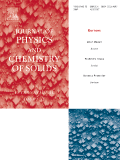
JOURNAL OF PHYSICS AND CHEMISTRY OF SOLIDS
Illuminating the Science of SolidsJOURNAL OF PHYSICS AND CHEMISTRY OF SOLIDS, published by Pergamon-Elsevier Science Ltd, is a distinguished international journal that has been at the forefront of disseminating cutting-edge research in the fields of physics, chemistry, and materials science since its inception in 1956. This journal, which is recognized for its high impact in the Q2 category across multiple subjects—including Chemistry (miscellaneous), Condensed Matter Physics, and Materials Science—serves as a vital platform for researchers, professionals, and students to engage with significant advances in solid-state physics and chemistry. With Scopus rankings placing it in the top 15% of its field across various domains, the journal plays a crucial role in shaping the scientific dialogue surrounding materials properties, synthesis, and applications. Although it does not currently offer open access options, the presented research is widely recognized for its quality and relevance, ensuring that published works contribute meaningfully to ongoing scholarly discussions.

CURRENT OPINION IN SOLID STATE & MATERIALS SCIENCE
Advancing knowledge in solid-state science.CURRENT OPINION IN SOLID STATE & MATERIALS SCIENCE, published by Pergamon-Elsevier Science Ltd, is a premier journal in the field of materials science that offers critical insights into the latest advancements and trends in solid-state materials. With an impressive impact factor and a 2023 ranking in the top quartile (Q1) for materials science, this journal provides a platform for researchers, professionals, and students to explore and disseminate high-quality research findings. The journal covers a broad range of topics, encouraging interdisciplinary dialogue among scientists and engineers. While currently not available as open access, its rigorous selection process ensures that only the most impactful and relevant studies are published. Since its inception, CURRENT OPINION IN SOLID STATE & MATERIALS SCIENCE has established itself as an essential resource for anyone involved in the field, facilitating the rapid exchange of knowledge that is vital for advancing material innovations.
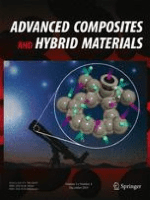
Advanced Composites and Hybrid Materials
Exploring the Boundaries of Composite TechnologiesAdvanced Composites and Hybrid Materials, published by SPRINGER NATURE, is a premier journal dedicated to the field of materials science, with a keen focus on innovative composite materials and their applications. With its ISSN 2522-0128 and E-ISSN 2522-0136, the journal has established itself as a cornerstone for researchers and professionals in materials chemistry, ceramics, and polymers, achieving an impressive Q1 ranking across multiple categories in 2023. In particular, it ranks #3 out of 161 in Polymers and Plastics and #4 out of 127 in Ceramics and Composites, highlighting its influential presence within the academic community. The journal aims to provide a cutting-edge platform for the dissemination of groundbreaking research and developments from 2018 to 2024, facilitating knowledge sharing and collaboration among experts. While currently adopting a traditional access model, the significance and impact of research published in this journal cannot be overstated, making it an essential resource for anyone interested in advancing the field of composite materials.

Applied Physics Express
Bridging Academia and Industry in Physics ResearchApplied Physics Express, published by IOP Publishing Ltd, is a leading journal that focuses on the rapid dissemination of research in applied physics, aimed at both academia and industry professionals. Operating from Japan, this prestigious journal features a broad scope within the domains of engineering and physics and astronomy, earning a significant place in the research community, as evidenced by its Q2 ranking in both disciplines for 2023. With a commitment to excellence, Applied Physics Express provides a platform for authors to share their innovative findings, promoting collaboration and advancement in the field. Its impact is further highlighted by its solid performance in Scopus rankings, featuring prominently within the engineering and physics categories. Although the journal does not currently operate under an open access model, it is dedicated to ensuring that high-quality research is accessible to its readers. Researchers, students, and professionals can find invaluable insights and cutting-edge studies within its pages, making it an essential resource for those engaged in applied physics and its interdisciplinary applications.
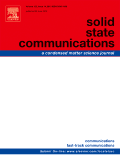
SOLID STATE COMMUNICATIONS
Bridging Research and Application in Solid-State MaterialsSOLID STATE COMMUNICATIONS is a prestigious journal published by Pergamon-Elsevier Science Ltd, dedicated to disseminating cutting-edge research in the fields of Chemistry, Condensed Matter Physics, and Materials Chemistry. With an ISSN of 0038-1098 and an E-ISSN of 1879-2766, the journal has established itself as a vital resource for researchers and professionals seeking to explore the fundamental properties and innovative applications of solid-state materials. As of 2023, it boasts a commendable standing, ranking in the Q2 quartile across its various categories, reflecting its impactful contributions to the scientific community. The journal is indexed in Scopus, further validating its relevance and quality, with notable ranks close to the median percentile in key areas. While SOLID STATE COMMUNICATIONS does not currently offer Open Access options, it remains a highly regarded source for rigorous scientific inquiry and open discussions, with a publication history dating back to 1963 and continuing to 2024. The journal serves as an essential platform for disseminating groundbreaking findings and fostering collaboration within the vibrant fields of solid state science.
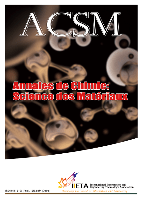
ANNALES DE CHIMIE-SCIENCE DES MATERIAUX
Shaping the Future of Materials Chemistry Since 1947ANNALES DE CHIMIE-SCIENCE DES MATERIAUX, published by the International Information & Engineering Technology Association, serves as a significant resource in the field of materials chemistry. With an ISSN of 0151-9107 and an E-ISSN of 1958-5934, this journal has been contributing to the scientific discourse since its inception in 1947. The journal is classified in the Q3 category for Materials Chemistry in 2023, positioning it within the 29th percentile in the Scopus ranking for materials science, underscoring its commitment to advancing knowledge and innovation in this vital area of research. Although currently not an open access publication, the journal welcomes submissions that explore a broad range of topics related to material science, thereby facilitating discussions that can lead to groundbreaking discoveries. Researchers, professionals, and students are encouraged to engage with the journal to stay at the forefront of materials chemistry, especially given its historical context and ongoing relevance in academic and industrial applications.
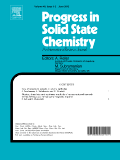
PROGRESS IN SOLID STATE CHEMISTRY
Unveiling Innovations in Materials SciencePROGRESS IN SOLID STATE CHEMISTRY, published by PERGAMON-ELSEVIER SCIENCE LTD, serves as a pivotal platform for disseminating cutting-edge research and advancements in the field of solid state chemistry. With an impressive impact factor and a respected status, this journal consistently ranks in the Q1 category across multiple disciplines, including Condensed Matter Physics, Materials Science, and Physical and Theoretical Chemistry. Following a rigorous peer-review process, it features articles that explore theoretical frameworks and experimental findings, thereby fostering innovation and collaboration among researchers and professionals. Although it does not adopt an open access model, its substantial reach and high Scopus rankings—19th in Condensed Matter Physics, 14th in Physical and Theoretical Chemistry, and 48th in General Materials Science—underscore its influence in shaping the future of materials research. Established in 1964, the journal continues to contribute significantly to the academic community, bridging the gap between theory and practical application in solid state materials.

JOURNAL OF SOLID STATE CHEMISTRY
Pioneering Discoveries in Condensed MatterWelcome to the Journal of Solid State Chemistry, a prestigious publication that has been at the forefront of solid state chemistry research since its inception in 1969. Published by Academic Press Inc. Elsevier Science in the United States, this journal offers a rigorous platform for the dissemination of high-impact research articles and reviews in a wide array of categories such as Ceramics and Composites, Condensed Matter Physics, and Materials Chemistry, among others. With an impressive Q2 ranking across multiple categories in 2023 and a commendable performance in Scopus rankings—including a top position in Inorganic Chemistry—this journal serves as an essential resource for researchers, professionals, and students eager to advance their understanding in solid state phenomena. Although it does not currently offer Open Access options, the breadth and quality of the published research ensure significant visibility and scholarly impact. As we continue to converge into 2024, we invite you to explore groundbreaking studies that push the boundaries of knowledge in solid state chemistry.

CRITICAL REVIEWS IN SOLID STATE AND MATERIALS SCIENCES
Elevating Knowledge Through Critical AnalysisCRITICAL REVIEWS IN SOLID STATE AND MATERIALS SCIENCES, published by Taylor & Francis Inc, is a prestigious journal dedicated to advancing the field of materials science through comprehensive reviews and critical analysis of existing literature. With an ISSN of 1040-8436 and an E-ISSN of 1547-6561, this journal serves as a vital resource for researchers, professionals, and students seeking in-depth understanding of solid-state phenomena and materials applications. Renowned for its high visibility in the academic community, it holds a Q1 ranking across multiple categories including Chemical Engineering, Condensed Matter Physics, and Physical and Theoretical Chemistry, showcasing its impact and relevance in the field. The journal spans its publication years from 1977 to 2024 and is highly regarded, holding prominent positions in Scopus rankings, making it a leading platform for disseminating critical insights and advancing knowledge in materials science. Although it is not an open-access journal, its rigorous peer-review process ensures the highest quality of articles, solidifying its status as a cornerstone for anyone engaged in materials research.

JOURNAL OF ELECTRONIC MATERIALS
Transforming Ideas into Innovations in Electronic MaterialsWelcome to the Journal of Electronic Materials, a premier publication in the field of materials science. Published by Springer, this esteemed journal has been a beacon for groundbreaking research in electronic, optical, and magnetic materials since its inception in 1972. As an established resource, it boasts a commendable impact factor and categorically ranks in the second quartile (Q2) in key areas such as Condensed Matter Physics and Electrical and Electronic Engineering, as well as holding a respectable third quartile ranking in fields related to Electronic, Optical, and Magnetic Materials and Materials Chemistry. Researchers, professionals, and students can access a wealth of knowledge as we publish original articles, reviews, and cutting-edge research that push the boundaries of science and technology in these critical fields. Stay informed and engaged as we explore advancements that shape the future of electronic materials.